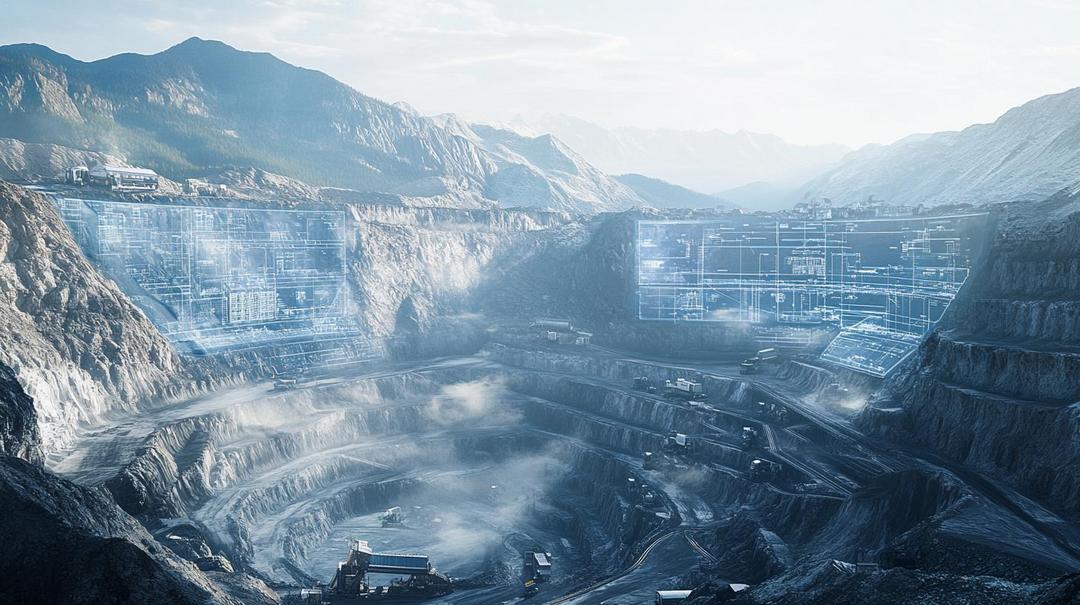Did you know that rare earth minerals power almost everything — from your smartphone to electric vehicles to renewable energy systems? Mining these critical materials is no small feat, often compared to finding a needle in a haystack! But here’s where machine learning (ML) steps in, revolutionizing the industry with precision, cost savings, and a greener footprint. In this article, we’ll explore how ML is helping mining professionals, sustainability officers, and researchers innovate in rare earth mining, turning overwhelming challenges into sustainable opportunities.
Let’s dig in — pun intended!
What's Inside
What is ML in Rare Earth Mining?
Machine learning (ML) (opens in a new tab) is a powerful computational approach that enables systems to learn and improve from experience without being explicitly programmed. In the context of rare earth mining, ML transforms traditional extraction processes by integrating advanced data analysis and intelligent automation.
Understanding Rare Earth Elements
Rare earth elements are critical materials used in high-tech industries, including:
- Electronics manufacturing
- Renewable energy technologies
- Advanced medical equipment
- Defense and aerospace applications
ML algorithms help mining operations optimize the complex process of identifying, extracting, and processing these valuable minerals more efficiently and sustainably.
The Role of Machine Learning in Rare Earth Element Exploration
Geospatial data processing (opens in a new tab) has revolutionized mineral exploration through ML technologies. Advanced algorithms can now:
- Analyze satellite imagery and geological surveys
- Predict potential mineral-rich locations with unprecedented accuracy
- Reduce exploratory drilling costs by up to 40%
Predictive Modeling Techniques
Sophisticated ML models integrate multiple data sources to create comprehensive mineral mapping strategies, including:
- Geological formation analysis
- Historical mining data
- Spectral imaging technologies
- Ground-penetrating radar information
Streamlining Rare Earth Mining Operations with Machine Learning
ML transforms mining operational efficiency through:
- Automated ore sorting systems
- Real-time performance monitoring
- Precision material separation techniques
Case Study: Chinese Rare Earth Mining
China’s rare earth mining sector demonstrates ML’s transformative potential by implementing:
- Advanced sorting algorithms
- Predictive maintenance systems
- Automated extraction workflow optimization
Reducing Environmental Impact with ML in Mining
Environmental sustainability becomes increasingly achievable through ML-driven solutions that:
- Monitor waste management processes
- Track water usage and quality
- Predict and mitigate potential ecological risks
Acid Mine Drainage Management
ML algorithms can now:
- Detect early warning signs of potential drainage issues
- Recommend preventative interventions
- Model complex environmental interactions with unprecedented precision
The Cost-Saving Potential of ML in Rare Earth Mining
Operational cost reductions emerge through:
- Automated decision-making processes
- Predictive maintenance scheduling
- Enhanced resource allocation strategies
Economic Impact Analysis
Investment in ML technologies demonstrates significant long-term benefits:
- Reduced equipment downtime
- Improved operational efficiency
- Lower exploration and extraction expenses
Challenges and Limitations of Using ML in Rare Earth Mining
Despite the transformative potential, ML implementation faces several challenges:
- Limited data availability in remote regions
- Complex technical skill requirements
- Privacy and ethical data collection concerns
Technical Implementation Barriers
Key obstacles include:
- Sophisticated infrastructure needs
- Specialized training requirements
- Initial high implementation costs
Future Trends: AI and ML Synergies in Sustainable Mining
Emerging technologies are rapidly expanding ML’s capabilities through:
- Advanced robotic systems
- Digital twin simulations
- Integrated AI-driven decision support platforms
Next-Decade Innovations
Anticipated developments include:
- More sophisticated predictive modeling
- Enhanced automation technologies
- Increasingly precise environmental monitoring systems
Conclusion
Machine learning is transforming the rare earth mining industry, offering tools that improve efficiency, reduce costs, and pave the way for more sustainable operations. From exploration to environmental management, ML holds the potential to solve some of mining’s greatest challenges, making it a must-know subject for industry professionals and researchers alike.
FAQs
What is machine learning, and how does it apply to mining?
Machine learning is a form of artificial intelligence that uses algorithms to analyze data and make predictions. In mining, it helps optimize processes, predict resource locations, and improve operational efficiency.
Are there real-world examples of ML being used in rare earth mining?
Yes! For example, companies like Lynas Corporation and mining operations in China have successfully used ML for ore sorting and improving mineral extraction processes.
Can ML reduce the environmental impact of rare earth mining?
Absolutely. ML can predict environmental risks, optimize waste management, and monitor resource use, reducing the ecological footprint of mining activities.
What are the limitations of using ML in mining?
Challenges include limited availability of quality data in remote areas, the need for skilled professionals to manage ML systems, and ethical concerns about data usage.
How expensive is it to implement ML in rare earth mining operations?
While the upfront costs can be high, the long-term benefits such as cost reductions, resource optimization, and reduced environmental impact often outweigh initial investments.


Dustin
Driven by a fascination with rare earth elements and their role in powering modern tech and engineering marvels. A true car and tech enthusiast, he loves exploring how these hidden heroes fuel our most exciting innovations.
You Might Also Like…